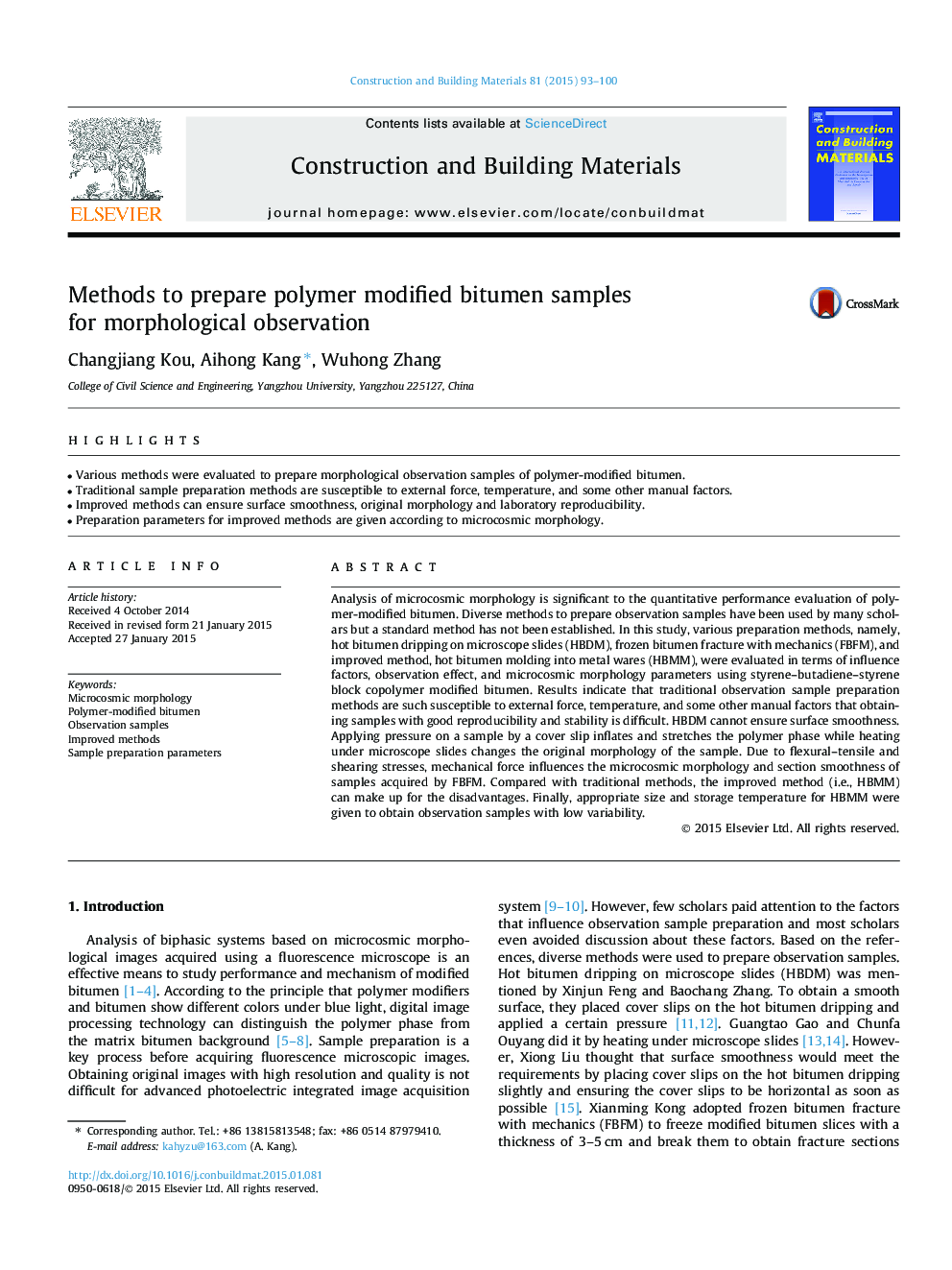| Article ID | Journal | Published Year | Pages | File Type |
|---|---|---|---|---|
| 6721135 | Construction and Building Materials | 2015 | 8 Pages |
Abstract
Analysis of microcosmic morphology is significant to the quantitative performance evaluation of polymer-modified bitumen. Diverse methods to prepare observation samples have been used by many scholars but a standard method has not been established. In this study, various preparation methods, namely, hot bitumen dripping on microscope slides (HBDM), frozen bitumen fracture with mechanics (FBFM), and improved method, hot bitumen molding into metal wares (HBMM), were evaluated in terms of influence factors, observation effect, and microcosmic morphology parameters using styrene-butadiene-styrene block copolymer modified bitumen. Results indicate that traditional observation sample preparation methods are such susceptible to external force, temperature, and some other manual factors that obtaining samples with good reproducibility and stability is difficult. HBDM cannot ensure surface smoothness. Applying pressure on a sample by a cover slip inflates and stretches the polymer phase while heating under microscope slides changes the original morphology of the sample. Due to flexural-tensile and shearing stresses, mechanical force influences the microcosmic morphology and section smoothness of samples acquired by FBFM. Compared with traditional methods, the improved method (i.e., HBMM) can make up for the disadvantages. Finally, appropriate size and storage temperature for HBMM were given to obtain observation samples with low variability.
Keywords
Related Topics
Physical Sciences and Engineering
Engineering
Civil and Structural Engineering
Authors
Changjiang Kou, Aihong Kang, Wuhong Zhang,
